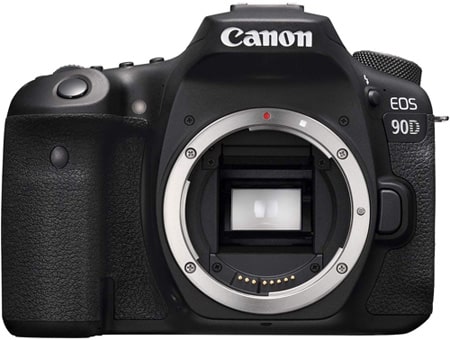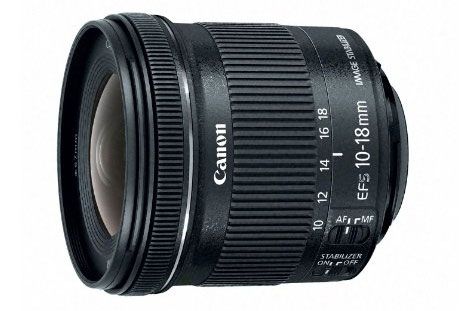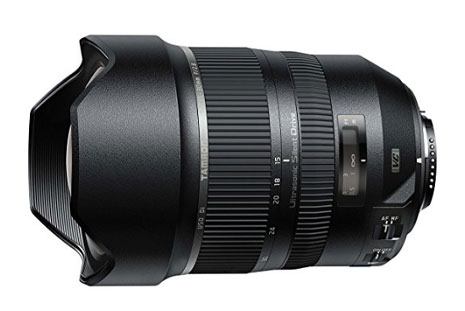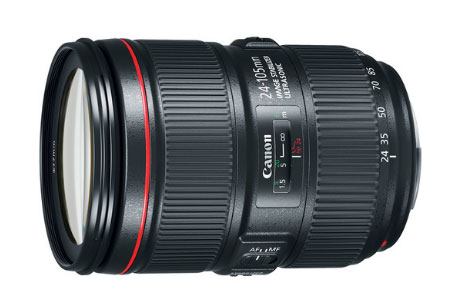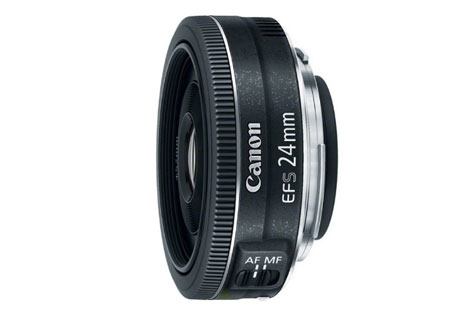Landscape photography is one of the most popular types among both amateur and professional photographers. We’ve researched the best Canon 90D lenses for landscape photography to help save you time and make it easy to select the best lens for your 90D.
Selecting the Best Canon 90D Lens for Landscape Photography
Traveling, exploring, waiting for the beautiful light and simply enjoying the time in nature can be amazing.
Since there are a ton of lenses available for your Canon 90D, we checked the best landscape lenses from Canon, Sigma and Tamron, and created this list of our very best picks.
The 5 Best Canon 90D Landscape Lenses:
Canon EF-S 10-18mm f/4.5-5.6 IS STM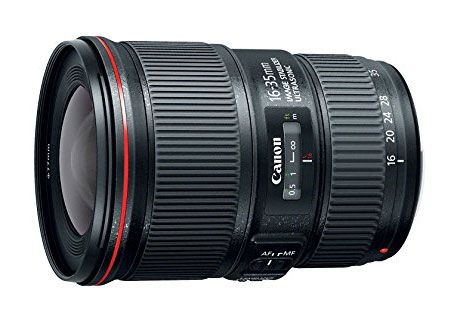
Tamron 15-30mm f/2.8 Di VC USD
Canon EF 16-35mm f/4L IS USM
Canon EF 24-105mm f/4L IS II USM
Canon EF-S 24mm f/2.8 STM
If you decide to buy anything through our Amazon links, you automatically support our work as we receive a small commission and it’s what allows us to write these guides.
1. Canon EF-S 10-18mm f/4.5-5.6 IS STM (APS-C)
The Canon EF-S 10-18mm f/4.5-5.6 IS STM is your widest Canon zoom option for the 90D and any other Canon APS-C camera.
When mounted, its field of view is equivalent to a 16-29mm lens on full frame, and that’s the wide angle range most landscape photographers use anyways. It’s great for architecture and indoor photography too, and it’s an excellent compact lens to take with you when travelling.
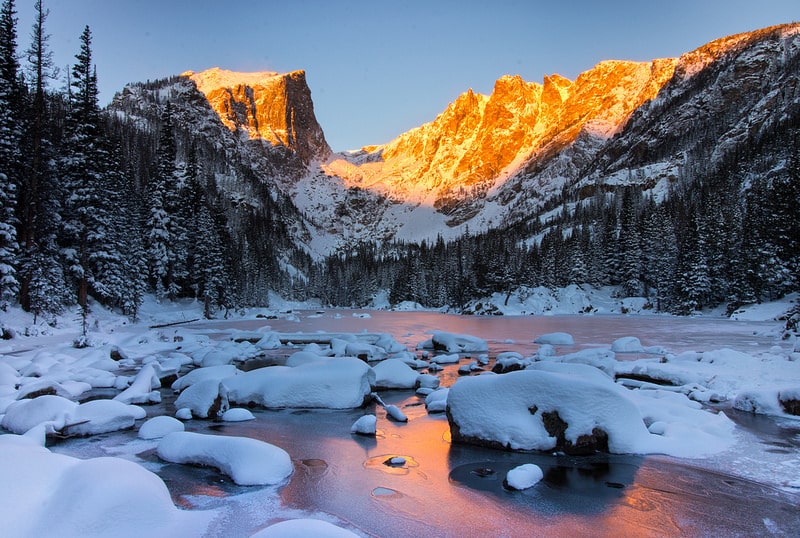 Canon EF-S 10-18mm | Copyright Valentina Gatewood
Canon EF-S 10-18mm | Copyright Valentina Gatewood
Optically, it’s performs very well and delivers sharp images. It replaces the 10-22mm, an older but more expensive lens, and they both have identical image quality. The 10-18mm also incorporates an STM type motor for more silent focusing, making it great for video shooters relying on silent auto focus.
If you’ve never owned a wideangle zoom before, you should get the 10-18mm, it’s fun and extremely wide. It’s also a perfect first time/gift lens too, because the price makes it attractive to newcomers, yet the quality and performance allow you to get professional shots.
You can buy it at Amazon or see more reviews here.
2. Tamron 15-30mm f/2.8 Di VC USD
Wide zooms from third-party lenses that would challenge more expensive Canon zooms are hard to find, but the Tamron 15-30mm f/2.8 Di VC USD does just that.
It was made to rival Nikon’s famous 14-24mm f/2.8G and Canon’s 16-35mm f/2.8 series. None of these have any stabilization added though, and that is perhaps Tamron’s strongest selling point right now. That, and the low price combined with excellent image quality!
Sometimes even f/2.8 is not enough to get a fast shutter speed, and if you need both, you literally have no other option. Increasing the ISO is always a possibility, but if you often shoot in low light the extra stop can make a big difference on your overall quality and depth of field.
The Vibration Reduction (VC) mechanism helps up to 3 stops (you can see it in TDP’s review here), which means you can shoot with 1/8 where you’d normally have to choose 1/60.
Thanks to USD (Ultrasonic Silent Drive) it focuses quietly and accurately, but the more expensive 16-35mm f/2..8 tends to be more accurate, at least when shooting in more difficult conditions. We’re not saying Tamron is bad here, just that this is the biggest difference between the more expensive lens below.
It’s excellent for daily landscape photography, but can also server as an astrophotography lens.
You can buy it at Amazon or see more reviews here.
3. Canon EF 16-35mm f/4L IS USM
The Canon EF 16-35mm f/4L IS USM is our most recommended lens if you’re looking for the best value for your money and are mainly shooting landscape/cities/static subjects.
With Image Stabilization and and Ultra Sonic Motor, you can shoot in pretty much any situation, be it indoors in low light or late during the day.
Image quality is absolutely stunning, it’s sharp in the center and corners and is simply outstanding for the price. Canon’s recent wideangle zoom lenses have been nothing short of amazing. It’s also the lightest of all 16-35mm lenses, including the Tamron (nearly half the weight).
Simply put, if you require a wide zoom for mainly outdoor work but will happily rely on IS when indoors or shooting with slow shutter speeds, this is your best choice. Even on the Canon 90D, where the field of view is equivalent to 25–56mm, it serves as a great all-around zoom that’s not too heavy.
You can buy it at Amazon or see more reviews here.
4. Canon EF 24-105mm f/4L IS II USM
In case you’re looking for something with even more zoom, the Canon EF 24-105mm f/4L IS II USM provides the best combination of reach and quality.
Compared to the previous version which was highly popular, the small increase in price also brings a few improvements. Not huge ones, but definitely worth the price.
It comes with better Image Stabilization, less optical issues at 24mm and 105mm (such as aberrations, vignetting and ghosting), but weighs more and is slightly bigger (125g more).
The 24-105mm and 24-70mm are both very similar in quality, have the same f/4 aperture, feature IS making the decision quite tough. The 24-70mm is 200g lighter, smaller and costs $400 less, whereas the 24-105mm is better if you want the most zoom and rarely use more than one lens.
We usually associate landscape with extreme wide angles, but more often than not, going over 70mm provides for some interesting shots. Sometimes, wide angle lenses can be too wide, therefore having telephoto zoom is a helpful addition.
You can buy it at Amazon or see more reviews here.
5. Canon EF-S 24mm f/2.8 STM (APS-C)
It looks funny, but the Canon EF-S 24mm f/2.8 STM is a “pancake” lens designed for the APS-C mount. It’s like the popular 40mm f/2.8 but with the crop factor in mind.
It’s so short you’ll often think you’re shooting with the body cap on. If you dislike carrying around a lot of lenses, or just want something super small to go with your Canon 90D, this is the best option.
Image quality as with most prime lenses is great, colors and contrast are also excellent for a lens that costs less than $150. On top of that, the STM technology is great for recording videos as it’s silent.
Mounted on APS-C it’s equivalent to a 38mm lens, and that almost makes it a normal/standard rather than a wideangle lens, but the length and f/2.8 are great for nature, traveling, indoor and low light situations. It displays so little distortion it’s hard to notice, especially when stopped down to f/4.
You can buy it at Amazon or see more reviews here.
How To Choose a Lens for Landscape?
Focal Length
The best lenses for landscape are either extremely wide or completely the opposite, in the telephoto range.
Wide angle lenses are the most common lengths used for landscape because they allow you to capture pretty much everything you see. Anything under 20mm is considered extreme wide angle, while 20-35mm is wide.
Telephoto lenses are excellent for isolating a specific subject or for shooting animals you will encounter on trips. This definitely depends on your style of photography and we only recommend getting a telephoto lens if you’ve already spent a lot of time using a wide one.
Aperture
You don’t usually shoot at f/2.8, at least not when trying to achieve a small depth of field, which is more or less a norm for landscape photography. Typically you shoot between f/5.6 and f/16.
This means you don’t have to worry this much about having the biggest aperture. Even when the day gets darker, you’ll still probably want to shoot with a small aperture and having Image Stabilization will be much more helpful in this case. Plenty of lenses below offer help up to 4 stops, allowing you to shoot at 1/8 instead of 1/125.
If you need a lens for more than just landscape then by all means do consider getting an f/2.8 (for low light), but for strictly outdoor work you shouldn’t worry about it.
For astrophotography primes will be a better choice due to their f/1.4 or f/2.8 apertures.
Auto Focus vs Manual Focus
If you use a tripod (highly recommended, or at least a monopod), you will probably focus manually with the Live View feature. Having a fast AF won’t affect your style much.
But it still helps having a fast, accurate AF, just in case you travel without a tripod or are shooting something on the go. Luckily, all of our lenses below have reliable auto focus. It just helps knowing that there’s no need to overpay a lens based on the AF alone if most of your subjects won’t move at all.
Weight & Size
Too often we forgot that as awesome as a lens may sound on paper, you still have to carry it around for hours to get the shots you want.
Weight and size are extremely important, and a difference between the weight of an f/2.8 and f/4 zoom is quite big. You can check the specific weight of each lens in links of each lens description.
Looking for More?
For great landscape photography tips, check out this 500px article and 20 Tips from OutdoorPhotographer.
While the right lens is the most important thing to complement your camera, remember that the speed of your memory card is also extremely important. There are a lot of memory card brands out there so it can be a bit overwhelming to figure out which on is compatible with your camera.
If you need some help finding the right one check out our selection of the best photography accessories.
Last Updated on September 14, 2021 by Nick Voorhees
First and foremost, I’m a husband and father. Then professionally I’m photographer, designer, blogger, and Esty store owner. My homebase is near the stunning Wasatch mountains in Utah but I love traveling with my family as part of our homeschooling journey. I also love teaching and helping out others. My faith is one of the biggest aspects of my life and brings be a consistent joy that I haven’t found in anything else. My main blog is BestPhotographyGear.com and I strive to make photography simple for anyone looking to learn or find gear for their individual needs. By nature, I like to study, research, and analyze things and I use that help provide the best advice and reviews I can.

